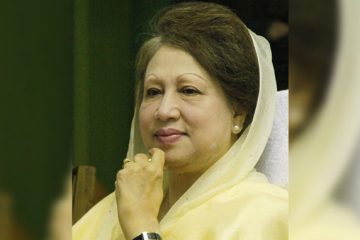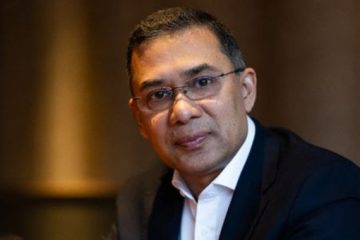Finance Minister AMA Muhith on Wednesday said the resource gap for the construction of Padma Bridge would be around US$ 500 million, as an inter-ministerial meeting reviewed the proposed mega project. “We’ll have to mobilize funds locally to meet the resource gap locally. I think there will be no problem to meet the gap.” he told reporters after the meeting at the Finance Ministry.
Asian Development Bank (ADB), the World Bank, Islamic Development Bank (IDB) and Japan Bank for International Cooperation (JBIC) are among the donors who have already pledged for funding the Padma Bridge project estimated to cost US$ 1.8-1.9 billion.
The meeting was convened to review and assess the donor-funded programmes in the country as it could not be done in the budget.
Ministers for Agriculture, Food, Communications, and Water Resources, Prime Minister’s Adviser on Finance, and senior officials concerned were present at the meeting.
Bangladesh is now preparing project appraisals afresh amid opening up of further opportunities of getting enhanced fund supports at concessionary terms from the Asian Development Bank and the World Bank in the backdrop of the global recession.
Replying to a question, the Finance Minister said he is thinking of issuing bonds to mobilize the resources to meet the gap both in terms of dollar bonds for NRBs and Taka bonds for the resident Bangladeshis instead of imposing surcharge.
He, however, said the mechanism for the fund mobilization would be decided by the Cabinet.
Muhith expressed the confidence that the Padma Bridge project would start as per schedule with “everything progressing well.”
He said the study on environmental impact and resettlement would be completed by October this year while the tendering process by December, followed by preparing the project appraisals for the donors by March next year. “Our target is to start construction of the bridge as soon as possible.”
Asked about the design, the Finance Minister said the issue of installation of rail tracks on the bridge has been resolved while experts were considering whether the bridge would be constructed of steel structure or concrete. The steel structure would cost a bit less than concrete structure.
“It’s not a big deal… the designers will decide in consultation with our experts,” he added.
Muhith said the inter-ministerial meeting also discussed about a master-plan of water resources management, including maintaining all- time navigability through dredging of the existing 6,000 km river routes.
Of the programmes under the mega plan, the government would prioritize the projects with time-bound manner. They include improvement of water drainage system to protect the towns and cities from damages due to water logging.
The drainage system improvement project would start with Gorai River in the south-west as the World Bank and Denmark would provide financial assistance to the project.
The Finance Minister said the meeting discussed the Energy and Power sector projects under another master plan, which is about to be in place. It also reviewed the project aids, which the country received during the last three years.




















